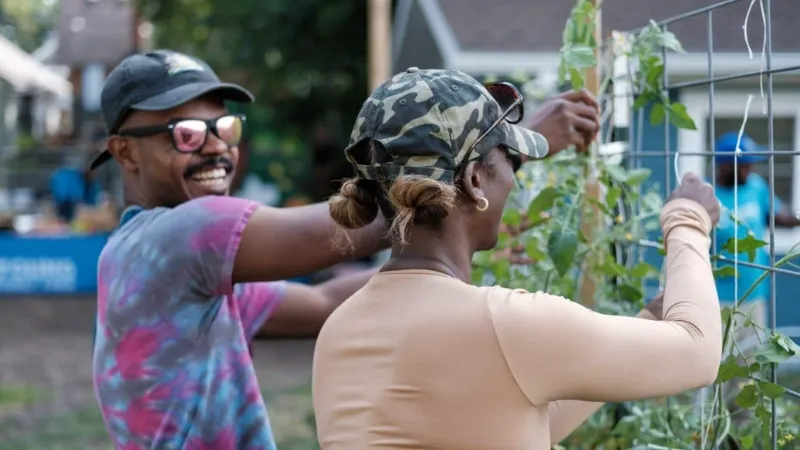Analysis
When Journalism Becomes Civic Infrastructure
September 24, 2025

In Kansas City, a Black-owned newsroom turns reporting into action, tackling food insecurity while rebuilding civic trust.
Community-rooted journalism can do more than report—it can identify urgent needs, mobilize resources, and strengthen civic infrastructure. The Kansas City Defender, a Black-owned newsroom, is showing exactly how this works through the Hamer Free Food Program, a mutual aid initiative addressing food insecurity while building trust and resilience in the community.
This summer, the last grocery store in a predominantly Black neighborhood of Kansas City closed, leaving residents without access to fresh food. Rather than wait for city officials to respond, The Defender partnered with local leaders to step in immediately. The September–October rollout is delivering produce boxes to 50 households within a mile of the closure. In its first week, more than 150 residents signed up to support, 70 volunteered as community food leaders, and $3,000 was pledged.
“I’ve always approached my work with The Defender as an organizer first, and a media worker second,” said Ryan Sorrell, founder. “It’s about asking how we can use our resources to support people. That approach—being active and present on the ground—has made it easier to build trust and launch programs like this.”
The program is fully integrated into The Defender’s journalism. Articles explain how it works, highlight urgent community needs, and provide clear steps for participation. Structured systems—including mapped delivery routes, volunteer stipends, and documented plans—ensure accountability. Earlier this year, when federal cuts threatened local growers and neighborhood associations, The Defender convened a Town Hall on Black food sovereignty, laying the groundwork for collaboration. By amplifying leaders already doing the work, the newsroom turned reporting into collective action.
Why This Matters for Funders
The Hamer Free Food Program illustrates how strategic investments in community journalism can deliver immediate impact while building long-term civic infrastructure. Funders focused on the following priorities should take note:
- Civic Engagement and Community Building: Strengthening local leadership, social cohesion, and trust between media and communities.
- Equitable Access to Information: Supporting culturally competent reporting that serves historically marginalized communities.
- Food Security and Public Health: Investing in practical solutions to urgent needs, such as food deserts, while educating and mobilizing residents.
- Capacity-Building for Local Media: Supporting newsrooms that transform reporting into sustainable programs with clear accountability.
- Innovation in Civic Infrastructure: Funding models where journalism becomes a platform for problem-solving, volunteer activation, and replicable impact.
This approach demonstrates that funding local newsrooms is not just about preserving reporting—it’s about amplifying solutions, strengthening communities, and generating measurable social impact.
By listening to their community, partnering with organizers, and creating accessible pathways for participation, The Kansas City Defender shows how journalism can act as civic infrastructure. Funders who support civic engagement, equity, and community resilience can replicate this model to achieve tangible, lasting results.